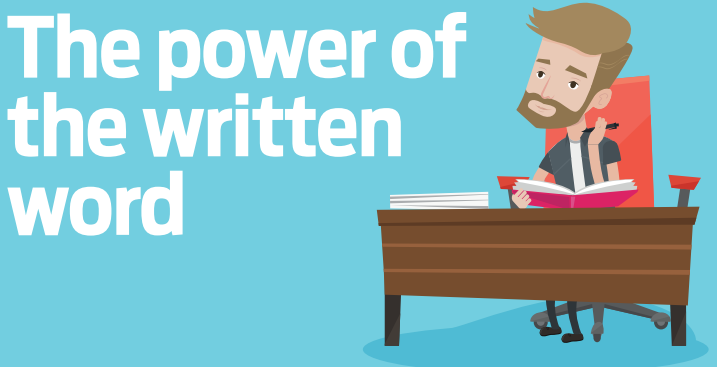
October 2021
Richard Jenkins explains why writing to yourself can be good for your mental health
Imagine spending several seconds shaking up a bottle of Coke before handing it to someone and asking them to open it. Chances are they’d do so very carefully.
In many ways, the process of realising negative thoughts is very similar. It’s no secret that being an accountant can be a high-pressure role, and it can be easy in such an environment for stress or anxiety to ultimately culminate in a sense of unhappiness. There’s nothing inherently wrong with this. We all have negative thoughts -what’s important is finding a way of releasing them. But when you’ve been sitting on a problem for a long while, letting it bubble and fizz like a shaken-up bottle of Coke, it often pays to find a careful way of dealing with it.
One technique for releasing negative thoughts in a constructive way is expressive writing. Or in other words, the act of putting your thoughts down on paper.
It’s a technique that works for a number of reasons. For one, when writing you aren’t spilling out your thoughts. You have to structure them and confront the reality of what you’re saying, in order to communicate them in some kind of meaningful way. But writing things down also creates an emotional connection. There’s a degree of commitment required and therefore greater emotional engagement with what you’re saying – more so than simply speaking your thoughts aloud as they pop into your head.
There are also very few limits to expressive writing. It can be used in a wider number of situations – owing in part to how accessible a technique it is – but is particularly helpful for those who feel as though they no longer have the answers, or as though choice is no longer available to them. If you’ve reached the conclusion than an rea of what you do is broken and are devising a plan to fix it, it can be an incredible took.
That said, like many other simple things, it can be difficult with expressive writing to know where to start. here are a few tips for those who might be interested in trying this technique.
What should I say?
One of the most important parts of expressive writing is that it doesn’t require you to subject yourself to other people’s judgement. Nobody is going to judge your spelling, your grammar or the content of your writing. If you don’t want to share what you’ve written with anyone, you’re perfectly within your rights not to do so With that in mind, you can write whatever you’re comfortable with.
What sort of headspace should you be in?
You should practice expressive writing when you’re at your most emotionally available. If you have two kids to get ready for school, first thing in the morning won’t work. It has to be during a time when you’re free from interruption or distraction. Free to let your mind roam and to express yourself. Free from parents, children and even partners. You don’t have to finish writing in one sitting but do try writing continuously for 15 to 20 minutes. All I would say is that it’s important you stick to whatever goal you set yourself.
What should you do once you’ve written it?
Opinion varies on what you should do once you’ve finished writing. For example, if you’re angry with a partner and are actually writing your letter about or even to them, you could either send it to them, keep it or even burn it.
Some people actually find a great deal of release in writing down and then burning negative thoughts or feelings. But for me, the greatest benefit is the writing itself.
A letter to your future self?
As well as using expressive writing, consider perhaps writing a letter to your future self.
Research by Oxford and Cambridge universities tells us that when we picture a better future for ourselves the probability that it will happen increases. Additionally, envisioning a brighter future dramatically increases your energy and motivation, and can lead to positive action.
Writing to your future self should be constructive; it’s about looking at where you a now and imagining where you want to be in future. make it aspirational, don’t limit yourself.
Map the journey between now and your goal. Ask yourself how you’ll achieve it. What help will you need? If you open your letter in a few years’ time, will you feel confident that you’d achieved what you set out to?
If you’re looking to truly invest in this type of writing, one suggestion I would give is not to look any further than five years ahead. Your future self is almost impossible to predict, and there has to be an element of achievability to this process. Otherwise, you’re setting up to fail, and the process can become more discouraging than anything else.
Always remember that therapy is brave. It takes an incredible amount of strength. Whatever approach you decide upon though -whether it’s expressive writing, writing a letter to your future self or another technique altogether – remember the three Ds: desire (to be different), discipline to do something about it and determination to follow it through. as with expressive writing if you’re going to write to your future self, you have to set aside time to do it. After all, a goal without a plan is just a wish. This process is important. If you’re going to try it, commit to it.
For more help and advice on dealing with the stresses and anxieties of a high-pressure workplace, visit: https://www.caba.org.uk/help-and-guides
- Richard Jenkins, Stress and Performance Management Specialist, CABA